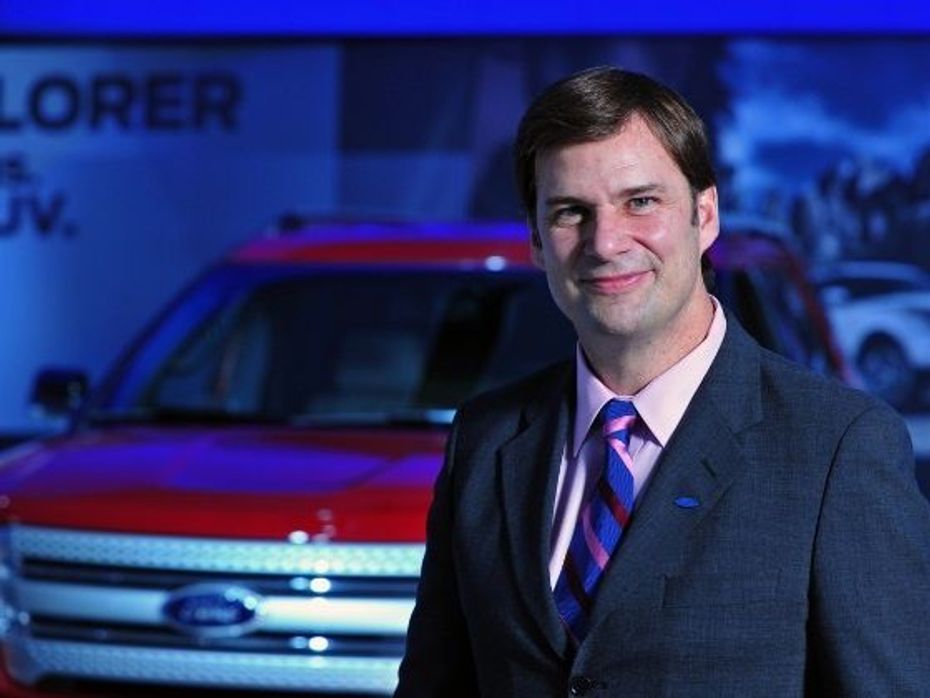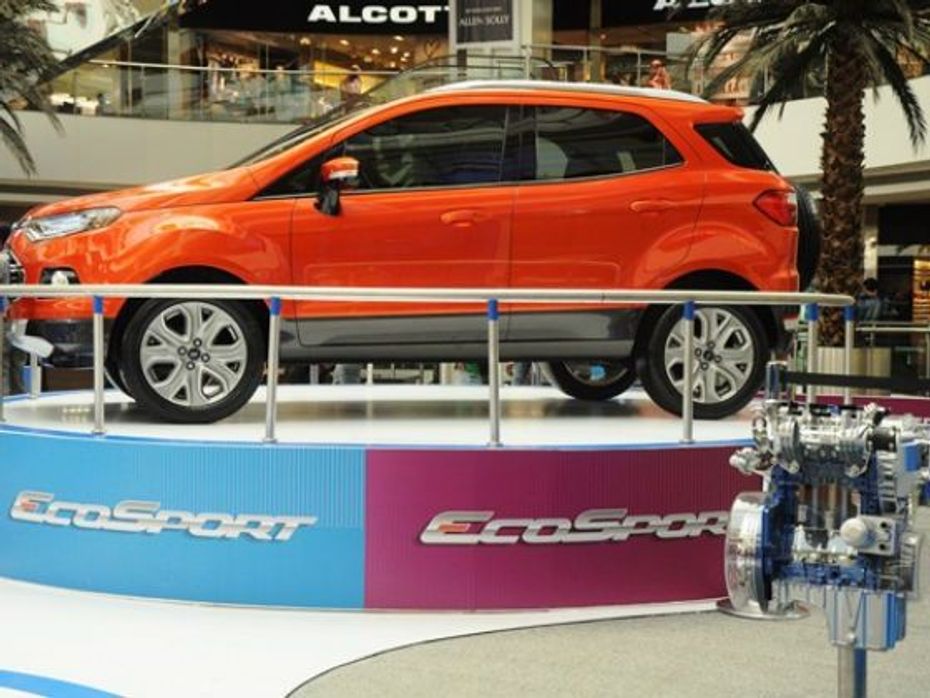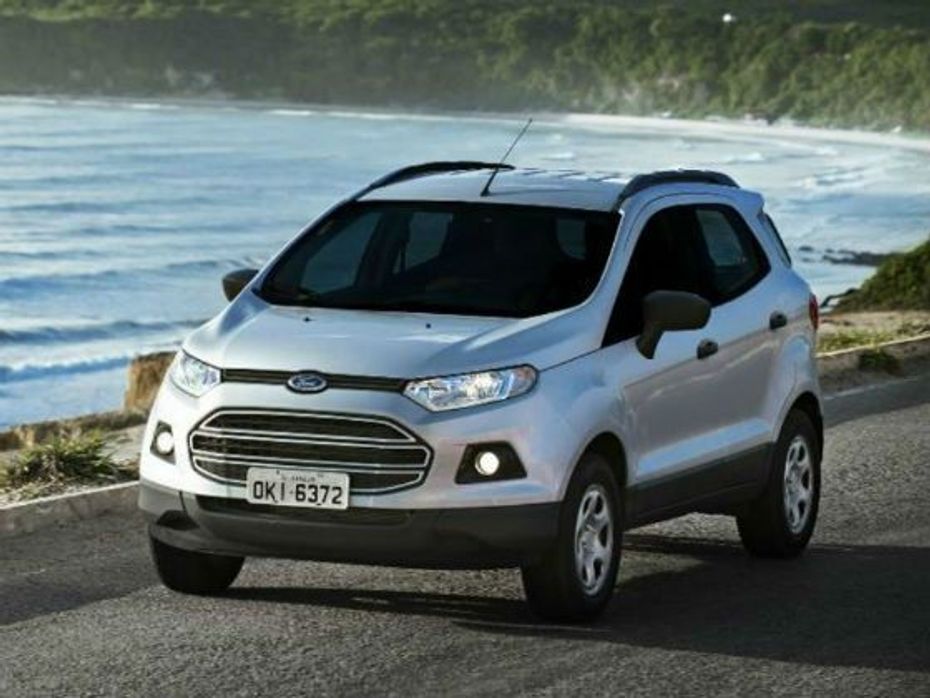
Ford India to delight customers with EcoSport 2,00,000 Fest
- Aug 21, 2015
- Views : 4661


Putting the customer, at the centre of the communication is a brave move. Could you tell us about the genesis of EcoSport's Urban Discovery campaign?
The way the current campaign has been designed in India is quite innovative and brave. We are literally handing the keys to the launch to the customer entirely. It's quite an ambitious thing for a big company. But we think it is the right thing to do for our brand. It is also a more efficient way of advertising. If you are confident, you need to turn the brand over to the customer, since they will be able to tell the story in a manner that we'll never be able to. It will be more authentic and more shareable. And that's the currency of today's marketing.
What the Urban Discovery campaign is doing is simply handing over the keys of the soon to be launched EcoSport to 35 specially chosen teams and then be a part of their urban discoveries. The idea is to form the emotional connect with the consumer and making them engaged enough to share their experience with their brand community, their friends and families, in a real life situation. The core DNA of this launch campaign is not the fancy TV ad but it will anchor around the awareness we build based on these 35 teams. (Also Read: Ford EcoSport for Indian market unveiled)
India is a tough market where many leading global auto brands are finding it difficult to become profitable. What has the Ford experience been?
India is the big idea market. The Indian consumers have a different reference point when compared to most other markets globally. To add to that they are also very tough and are among the most informed customers in the world. For instance, in a focus group in India the customer is aware of not just about the car-technology but even the difference between the tyres and their diameter. For a marketing guy this is a very special market and also a difficult one to crack. That is why innovation is so important here.
What have been some of the key learnings from the Indian market and consumer?
We are relatively young here (Ford has been in India since 1995). The consumer opinions in this category are formed over time and not overnight. This is a market that we feel is ready for an innovation like the EcoSport. There is a lot to learn from the Indian market that we can export to other places. For instance Figo, which we rolled out in countries like Mexico, South Africa, etc after it was launched successfully in India. Figo really changed our mind on what price Ford should compete at. We have been in the automotive business for over 100 years but the gift that India has given us is an appreciation for making a product affordable - around the globe.

To what extent has Ford's marketing strategy been impacted by the changes in the media consumption habits of consumers?
While the market is still being guided by very traditional media, the old order is changing at a rapid pace. For instance the use of celebrities where a star or a cricketer using the product would get the consumer to buy it is something that in many markets is finished. Nobody believes them and no one will buy the product that way.
What about the interplay of traditional and new age media?
The use of mobile phone has really transformed the media landscape in this market and I feel has brought the situation to a tipping point. The way we see it, while all media is important, instead of designing a campaign for traditional media first and then moving to the non-traditional space as the amplifier, let's reverse the process. Start with digital and then move to other media so that people have a conversation about the product way before it is available commercially. Let the interest grow organically and then augment with traditional media to give it scale since by then you have already got many people interested. This approach becomes a much more seamless and cost effective activity.
Car advertising in India like many other markets is criticised for sticking to a template; one followed by pretty much all auto brands. How does one break this clutter?
The mistake is that people put pressure on the advertising itself to be different instead of the tactic being different. Brands should learn to challenge the prescribed traditional approach. For instance, it just does not make any sense to spend 100% of the ad-budget in three months alone. Today's customer has so many things to engage and entertain him. It takes time for people to get used to new products. It's very important for us as an industry to try new tactics as much as new campaigns.

Ford has been known to attempt a radically different way of marketing with better resource allocation. What has been the genesis of this approach?
This change started about five years ago when the company was trying to completely reinvent itself, across functions, with newer and more efficient ways of doing things. We realised that while the brand was present in various countries, it was behaving differently everywhere, without any learnings or sharing of best practices. In the process resources were being wasted. For example, for Focus the compact car brand that was selling in various markets across the globe, there were 20 different ad campaigns - all totally separate. 15% of the entire budget was being spent on just producing the ads. What was required was to make marketing more efficient and resourceful which was the centre plank of the One Ford plan. The Global Team Ford is the unified marketing team that brings the various agencies under one umbrella. For instance in India, the Global Team Ford is an aggregation of JWT, Mindshare and Wunderman.
What are some of the prerequisites for this approach to work?
This approach needs a totally different way of doing things both at the client as well as the agency level. Even before starting, the company needs to know exactly what they want. In the old agency model, for example, when the car had to be launched there were times when the agency would be called and told to design the ad campaign without any clarity. The agency would pitch and in the process of pitching the client would often make up his mind on the backs of the creative directors. Now that is not the most efficient way since it obviously limits strategy. So this new approach pulls the whole planning process upfront. The brand owners have to do more work, think through all possible options and then figure out the ones that will work.
It requires more time and more ownership from the client. And at the agency level?
Earlier the creative director was all knowing and preening almost like a peacock showing off his wares. In the new model the creative director is more like the coach of the fantasy team, where he has to pick players based on the situation, brief them and get the most out of them. And that is the tough part.
You are also on Facebook's Client Council, the only auto brand on the council. How is it helping in your overall marketing mandate?
Facebook's Client Council, where I share the table with brands like Unilever, P&G, Coca-Cola and Walmart is a great forum to discuss the issues common to the community and also to find the right balance between experience, promotion and integrity. For instance, figuring out answers to questions like how best to monetise the mobile experience with people spending so much time on mobile devices. Or the privacy issues — where should advertising exist and where it should not? I give Facebook a lot of credit for working hard on protecting their experience and their brand.

Ford India to delight customers with EcoSport 2,00,000 Fest

Ford celebrates 2 lakh unit sale of compact SUV EcoSport

India-bound 2016 Ford EcoSport unveiled

Ford to export EcoSport to the US

Ford EcoSport tops intial quality survey

Geneva 2015: Updated Ford EcoSport showcased

Made in India Ford EcoSport recalled in Australia

Ford Ecosport goes on sale at Defence and Central Police Canteens in...

India-made Ford EcoSport crosses 1 lakh sales mark

Force Gurkha 5-door Interior Teased, Offers A Glimpse Of This Modern...
India's largest automotive community